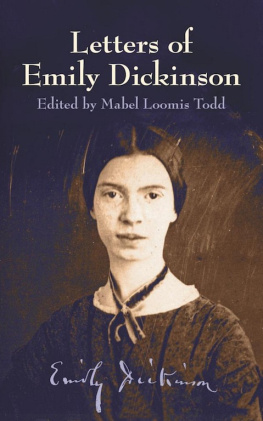Some typographical errors have been corrected; .
(In certain versions of this etext [in certain browsers] clicking on this symbol , or directly on the image, will bring up a larger version of the illustration.)
(etext transcriber's note) |
By Frances Elliot
Old Court Life in France
2 vols. 8.
Old Court Life in Spain
2 vols. 8.
Image not available
Image not available
OLD COURT
LIFE IN FRANCE
BY
FRANCES ELLIOT
AUTHOR OF DIARY OF AN IDLE WOMAN IN ITALY,
PICTURE OF OLD ROME, ETC.
Image not available: colophon
ILLUSTRATED
VOLUME I.
G. P. PUTNAMS SONS
NEW YORK AND LONDON
The Knickerbocker Press
Copyright, 1893, by
G. P. PUTNAMS SONS
Entered at Stationers Hall, London
By G. P. Putnams Sons
Made in the United States of America
The Knickerbocker Press, New York
TO MY NIECE
THE COUNTESS OF MINTO
THIS WORK IS
INSCRIBED
PREFACE
TO THE FIFTH EDITION.
I CANNOT express the satisfaction I feel at finding myself once more addressing the great American public, which from the first has received my works with such flattering favour.
I have taken special pleasure in the production of this new edition of Old Court Life in France, which was first published in America some twenty years ago, and which is, I trust, now entering into a new lease of life.
That the same cordial welcome may follow the present edition, which was accorded to the first, is my anxious hope.
A new generation has appeared, which may, I trust, find itself interested in the stirring scenes I have delineated with so much care, that they might be strictly historical, as well as locally correct.
To write this book was, for me (with my knowledge of French history) a labour of love. It takes me back to the happiest period of my life, passed on the banks of the historic Loire: to Blois, Amboise, Chambord, and, a little further off, to the lovely plaisances of Chenonceaux and Azay le Rideau, the woods of magnificent Versailles, and Saint Cloud (now a desolation), on to the walls of the palatial Louvre, the house-tree of the great Kings and Queens of Francenever can all these annals be fitly told! Never can they be exhausted!
To be the guide to these romantic events for the American public is indeed an honour. To lead where they will follow, with, I trust, something of my own enthusiasm, is worth all the careful labour the work has cost me.
With these words I take my leave of the unknown friends across the sea, who have so kindly appreciated me for many years. Although I have never visited America, this sympathy bridges space, and draws me to them with inexpressible cordiality and confidence, in which sentiment I shall ever remain, leaving my work to speak to them for me.
Frances Elliot.
June, 1893.
PREFACE
TO THE THIRD EDITIONIN REPLY TO CERTAIN CRITICS.
T O relate the Court life of Francefrom Francis I. to Louis XIV.it is necessary to relate, also, the history of the royal favourites. They ruled both court and state, if they did not preside at the council. The caprice of these ladies was, actually, the Pivot on which French history turned.
Louis XIII. was an exception. Under him Cardinal Richelieu reigned. Richelieus zeal for France led him unfortunately to butcher all his political and personal opponents. He ruled France, axe in hand. It was an easy way to absolute power.
Cardinal Mazarin found France in a state of anarchy. The throne was threatened with far more serious dangers than under Richelieu. To feudal chiefs were joined royal princes. The great Cond led the Spanish troops against his countrymen. Yet no political murder stains the name of the gentle Italian. He triumphed by statescraft,and married the Infanta to Louis XIV.
Cardinal de Retz possessed much of the genius of Richelieu. No cruelty, however, attaches to his memory. But De Retz was on the wrong side, the side of rebellion. He was false to his king and to France. Great as were his gifts, he fell before the persevering loyalty of Mazarin.[Pg ]
The personal morality of either of these statesmen ill bears investigation. Marion de lOrme was the mistress and the spy of Richelieu; Mazarinit is to be hopedwas privately married to the Queen Regent Anne of Austria. Cardinal de Retz had, as a contemporary remarks, a bevy of mistresses.
We have the authority of Charlotte de Bavire, second wife of Phillippe Duc dOrlans, brother of Louis XIV., in her Autobiographical Fragments, that her predecessor, Henrietta of England, was poisoned. No legal investigation was ever made as to the cause of her sudden death. There is no proof that Louis XIV. disbelieved she was poisoned.
The number of the victims of the St. Bartholomew-massacre is stated by Sully to have been 70,000. (Memoirs, book I., page 37.) Sully and other authorities state that Charles IX., at his death, manifested by his transports and his tears the sorrow he felt for what he had done. Further, that when dying he sent for Henry of Navarre, in whom alone he found faith and honour. (Sully, book I., page 42.)
That Sorbin, confessor to Charles IX., should have denied this is perfectly natural. Henry of Navarre would stink in the confessors nostrils as a pestilent heretic. As to the credibility of Sorbin (a bigot and a controversialist), I would refer to the Mmoires de ltat de France sous Charles IX., vol. 3, page 267.
According to the Confession de Saucy, Sorbin de St. Foy was made a Bishop for having placed Charles IX. among the Martyrs.
Frances (Minto) Elliot.
August, 1873.
PREFACE
A LL my life I have been a student of French memoir-history. In this species of literature France is remarkably rich. There exist contemporary memoirs and chronicles, from a very early period down to the present time, in which are preserved not only admirable outlooks over general events, but details of language, character, dress, and manners, not to be found elsewhere. I was bold enough to fancy that somewhat yet remained to tell;sayof the caprices and eccentricities of Louis XIII., of the homeliness of Henri Quatre, of the feminine tenderness of Gabrielle dEstres, of the lofty piety and unquestioning confidence of Louise de Lafayette, of the romantic vicissitudes of Mademoiselle de Montpensier; and that some pictures might be made of these old French personages for English readers in a way that should pourtray the substance and spirit of history, without affecting to maintain its form and dress.
In all I have written I have sought carefully to work into my dialogue each word and sentence recorded of the individual, every available trait or peculiarity of character to be found in contemporary memoirs, every tradition that has come down to us.
To be true to life has been my object. Keeping close to the background of history, I have endeavoured to group the figures of my foreground as they grouped themselves in actual life. I have framed them in the frames in which they really lived.
Frances Elliot.
Farley Hill Court ,
Christmas, 1872.
CONTENTS
| CHAPTER | PAGE |
| Francis I. |
| Charles de Bourbon |
| Brother and Sister |
| The Quality of Mercy |














